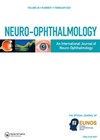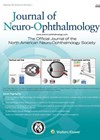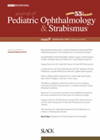
Journal Reviews archive for 2021
Use of group consultations in the management of idiopathic intracranial hypertension
The incidence of idiopathic intracranial hypertension (IIH) has risen by >100% between 2002 and 2016 in the UK, in association with rising obesity rates. This increasing incidence has inevitably led to increased pressures on service capacity. Evidence for other conditions...
ROPPVAL Syndrome as a differential diagnosis to optic neuritis
Optic neuritis (ON) is a common cause of visual loss in young patients. Patients with eye pain and ipsilateral visual loss are often referred into neuro-ophthalmology clinics with a possible diagnosis of ON. In 2018 Jefferis et al. reported a...
Using lumbar puncture as a diagnostic tool of IIH when the presentation is typical
The authors present the findings of a retrospective observational chart review across three neuro-ophthalmology clinics. Databases at each clinic were searched using inclusion criteria based on established diagnostic criteria for idiopathic intracranial hypertension (IIH). Cases with missing data, atypical findings...
Can retinal layer thickness predict the progression of disability in MS?
This is an observational retrospective cohort study presenting the data of 188 patient diagnoses with multiple sclerosis at two specialist centres. All included patients were adults below the age of 70 years, stable on their disease modifying treatment for at...
Patient and clinician view of telemedicine for neuro-ophthalmology consultations when in-person is not possible
The authors present a linked survey sent to patients and neuro-ophthalmologists after a consultation with one of 12 neuro-ophthalmologists from three centres in the United States, over a three-month period in 2020. All consultations were offered virtually due to restrictions...
Transcanalicular diode laser-assisted DCR: success rates and factors for success
This study aimed to evaluate the success rates of transcanalicular diode laser-assisted dacryocystorhinostomy (TCL-DCR) during three years of follow-up and to find clinical factors that influence surgical outcomes. Major outcomes were defined as a patent neo-ostium tested by irrigation (anatomical...
Surgical outcomes for constant and intermittent exotropia
This study evaluated the surgical results for constant and intermittent exotropia to investigate the factors that might influence the surgical results in a Scandinavian population. This was a retrospective study from 2011-2015 during which time 633 patients had strabismus surgery...
Successful laceration repair with the Mini Monoka stent
The aim of this study was to evaluate demographic data, clinical profile and factors responsible for success of anatomical and functional outcome of canalicular laceration repair with the Mini Monoka stent in children younger than 10 years. This was a...
Comparing visual acuity to visual demand levels in classrooms
This study investigated the actual logMAR and contrast sensitivity demands in a cross-sectional sample of kindergarten through grade 12 classrooms in New York city. This was done to consider the potential benefit in optimising the specificity of visual acuity-based screening...
ROPScore for detection of any and severe ROP
ROPScore is a free tool consisting of a logistic regression equation to calculate the risk per child and calculated one time per infant at six weeks of life. It helps to predict severe retinopathy of prematurity (ROP). This study aimed...
Accuracy of AS-OCT muscle insertion measurements
Anterior segment - optical coherence tomography (AS-OCT) is a non-contact imaging method that can provide accurate measures of extraocular muscles to limbus insertion distances. The authors evaluated the accuracy of AS-OCT for locating horizontal extraocular muscle insertions after strabismus surgery...
Incidence and outcomes of endophthalmitis with in-house compounded intravitreal bevacizumab injections
This multicentre study examining a five-year period from 2014 to 2018 evaluated the incidence rate and outcomes of endophthalmitis after intravitreal injection of in-house compounded bevacizumab. In-house compounded syringes were prepared in compounding pharmacy using sterile standard operating guidelines. All...








